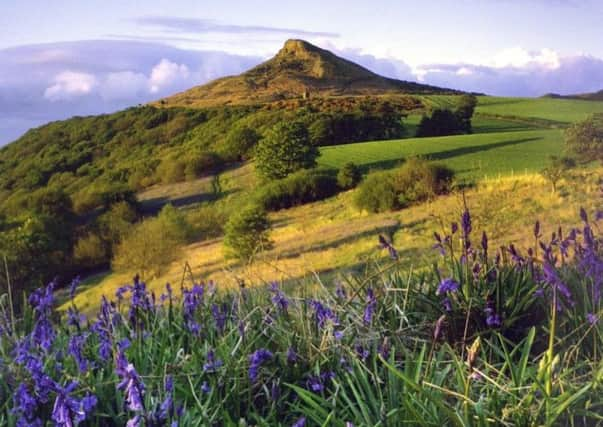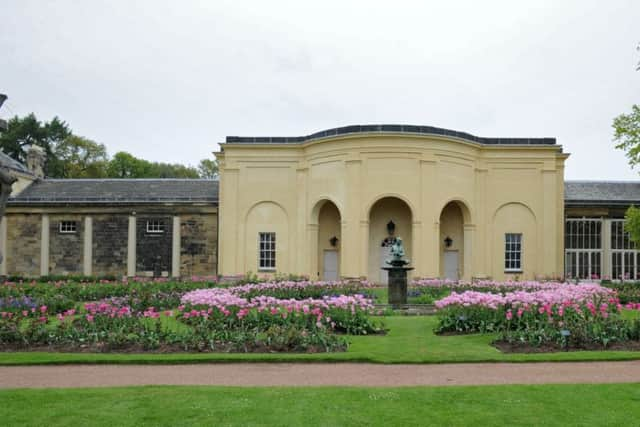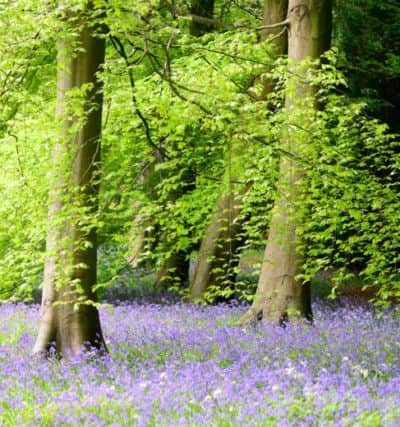Where to find Yorkshire’s best bluebells this spring


It left me with a mental calendar of what happens when and where; when the first summer birds would arrive, where the best conkers are, where the best apples to scrump would be and when the first of the bluebells would begin the slow carpeting of our woodlands.
The bluebell is one of the country’s most easily recognisable flowers and yet, despite every village seemingly having its own bluebell wood, we seem to take this delicate and fragile plant for granted. I wonder if things were different and we heard of a land where the floor of a forest turned blue for a week, would coach trips and excursions be laid on? Instead of the tulip fields of Holland or the sunflowers of Tuscany would the magical “Blue Woods” be a destination?
Advertisement
Hide AdAdvertisement
Hide AdNowhere does bluebells better than the UK; latest estimates suggest that nearly three quarters of all British bluebells (Hyacinthoides non-scripta, to be technical about it) grow in Britain. Smaller populations occur along the Atlantic coast of Europe, from northern Spain through France and across to the Netherlands, but nothing as impressive as our displays. Perhaps I’m biased, but amidst the cool damp woods of Yorkshire we are treated to an even finer display.


A warm spring will bring the flowers on and a cool spell will stay their fading, though the warmth will bring out their scent. Each season is different; there is a magical sweet spot between the first flowering and them “going over” to use a gardener’s phrase. Every year I promise myself I will make the most of my local woodlands, yet every year I am left wanting through lack of time.
However, not all is well in British woodlands. British bluebells are facing a significant threat, with our native ’bells interbreeding with Spanish ones that are “escaping” from gardens. These paler-flowered and larger plants were an interesting choice when we saw native flowers as having no place in our manicured and exotic gardens.
“There certainly is a risk from the Spanish,” says Dr Trevor Dines, botanical specialist at the conservation charity Plantlife. “And we’re currently assessing the scale of the threat. Part of the problem is that the timescale is so long. Genes from the Spanish are certainly getting into some populations of native bluebell – you can find hybrid swarms where both occur together, and bees clearly don’t differentiate so they’ll move pollen from one to the other – but the process of mixing will take decades. The bluebell is our iconic woodland flower and a real wildlife spectacle, second only to flocks of starlings wheeling overhead at dusk. For so many people, bluebells hold memories of childhood walks with parents and grandparents in woodlands – a memory reinforced by the scent, which is spicy and fruity and unique to British bluebells.”
Advertisement
Hide AdAdvertisement
Hide AdAnd that’s it, isn’t it? They are a national and an international treasure, and to lose them would be a disaster, our countryside and our contribution to the diversity of life on the planet would be diminished enormously.


“If there are no native British bluebells nearby [if you live in a city, for example], there’s nothing to worry about – enjoy them,” says Trevor. “But if you have native wild bluebells nearby in parks, woodland or hedgerows, consider digging them up, letting them dry out for a few weeks, and then compost them.”
Happily, gardeners can now buy British bluebells legally – it is still illegal to take them from the wild – and several growers are now raising native bluebells, with some landowners apparently making an living from bluebell farming in a reminder that our native wildlife has a value that can be counted in the all-important ledgers of business.
So where to see them and when? Well, bluebells push their leaves through the leaf litter from January and flower between April and May. Flowering in the warmer, sunnier Vale of York may be weeks ahead of that in the cooler valleys of the West Riding and the Dales, so with a little planning and travel you can enjoy the season for weeks. I know I will be trying.